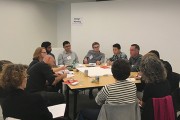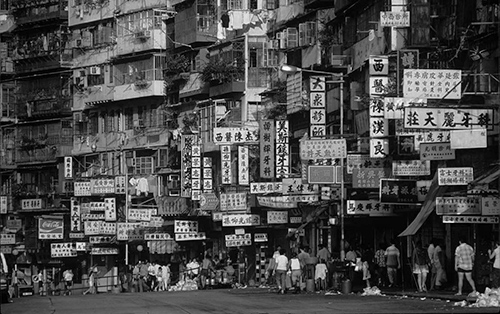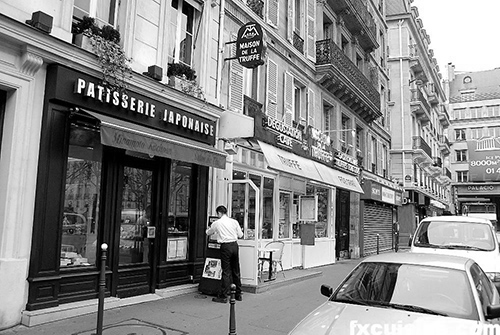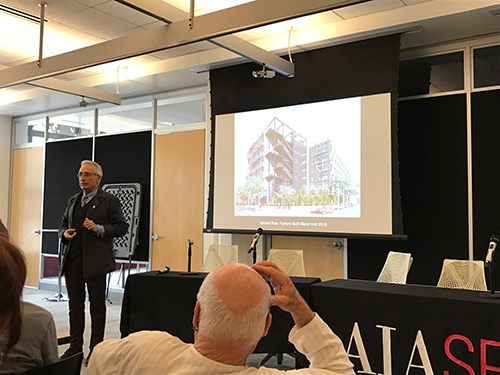
San Francisco in 2100: Best and Worst Case Housing
by Rebecca Firestone with Mark English AIA | Interviews
“Architects can help to envision what density could look like. Paris is a lot denser than San Francisco, and yet we’re still willing to travel thousands of miles to enjoy it.”
“The Bay Area has one housing unit for every 10 jobs. Something’s gotta give.”
“Architects need to be more political.”
“Replace municipal fiefdoms with regional strategies.”
“Support non-traditional housing.”
“Pursue adaptive planning for climate change.”
“Architects can show people what density could really look like.”
“Collaborations that are led by private sector with support from the public sector, can move faster and get more done.”
These were a few of the take-aways from a day-long housing forum hosted by the AIA-SF on March 24th, 2017. Panelists ranged from developers to city planners to designers. The sold-out event included a group of students from California Polytechnic who came over 200 miles from San Luis Obispo. “It was a surprising concordance,” said panel sponsor Mark English, AIA. “Everyone agreed on the major points.”
Highlights
Video Highlights:
In greater detail, points included:
- More housing. The Bay Area is far behind other areas like Seattle in creating new housing, which has led to ludicrous scenarios, such as apartment applications that are more competitive than getting into a Manhattan co-op building.
- Regional planning strategies rather than allowing each municipality to set its own arbitrary restrictions based on preserving an idyllic past from 40 years ago.
- High-density housing at transit hubs, focusing more on public transit and less on parking.
- Eliminate building height restrictions in general. Most people experience only the first 30 feet of a building. Celebrate a lively and interactive street-level experience through retail and a walkable neighborhood, not by limiting the number of stories. It works in Manhattan and Paris, why not here?
- Tech companies aren’t villains. They bear the same responsibility as any other industry.
- Legalize non-traditional housing arrangements such as co-housing, group homes, tiny houses, and micro-apartments that are the “co-living” equivalents of “co-working”. Some of these might be suitable for both the very young and the very old.
- Adapt for climate change. Face it, the sea level will rise, so let’s build for that now and re-do essential infrastructures such as sea walls.
Panelists included:
- Jeff Till, Principal, Studio Till Architects
- Adrianne Steichen, Principal of PYATOK Architecture and Urban Design, based in Oakland
- Kearstin Dischinger, San Francisco City Planning Department
- Jonelle Simunich, Foresight Specialist at Arup
- Riki Nishimura, Director of Urban Strategies, Gensler
- Allison Arieff, Editorial Director, SPUR
- Cynthia Parker, CEO of Bridge Housing, a Bay Area nonprofit affordable-housing development corporation
- Sonja Trauss, founder of the San Francisco Bay Area Renters’ Federation, advocate for housing expansion
- Alexa Arena, Development Manager, Lend Lease Corporation
- Johanna Hoffman, Landscape Architect, Urban Fabrick
- Rachel Flynn, VP of Planning for FivePoint Lennar Housing and former Planning Director for the City of Oakland
Possible Futures
Panel moderator Gwendolyn Wright began by asking the panelists to envision San Francisco in the year 2100. What’s the best, and the worst, possible future?
All the dystopian views were basically “business as usual” – in other words, what’s already happening: no availability, skyrocketing rents, tent cities, homelessness, claustrophobic group-living situations, the available housing stock slowly co-opted by a shrinking elite while the rest of the city drains away to outlying areas with longer commutes and fewer services. On the other side, positive views consisted of much-needed remedies, and a future that acknowledged the necessity of deep change.

The famous Kowloon Walled City, now torn down, was an example of an unregulated building complex that was for a time the most densely inhabited city block in the world. Image: Greg Girard
Regional Planning
Right now, a municipal approach has led to citizens who truly don’t realize that they are part of the problem. They think that maybe some other municipality will absorb all those low-income (under $100K) people who need to work and live in the Bay Area. The Bay Area has 4.5 times its 1940 population, but San Francisco itself only grew 4% from 1950 until now.
A new proposed housing law by former San Francisco Supervisor Scott Wiener, SB-35 , would help free up housing entitlements in the State of California.
Fear of Density
There’s a widespread fear of density in the Bay Area. But it’s quite possible to have a high-density and livable city. “Architects can help to envision what density could look like by showing a day in the life,” said Jeff Till, one of the panelists.
“The AIA needs to be a lot more vocal,” Till went on. “The YIMBY crowd has made a huge difference in a year and a half, with an appeal that is largely emotional. Architects can contribute to that conversation by adding a pragmatic and clear element, and through visualizations. One example is SPUR’s corridor studies for San Pablo Avenue or Telegraph Avenue in the East Bay. What would a healthy, densified, mixed-used neighborhood look like in those corridors, instead of sagging telephone poles and run-down storefronts from the post-war era?”
Till was emphatic about bringing these visions to life in a way that the general public could relate to, and ultimately trust. “We need to set a mood. What does a more enjoyable urban lifestyle look like? A place where people could live close to their jobs, with dependable transit, a place you’d want to push a stroller around?”
“The general public may resist out of fear, and in the past may have been confronted with badly thought out designs. Or maybe they don’t even know what good design looks like. I used to ask people ‘Where did you go on your last vacation?’ and if they answered ‘Paris’, I could point out that Paris is a lot denser than San Francisco, and yet they were still willing to travel thousands of miles to enjoy it.”

Paris is denser than San Francisco, but has a good street-level experience. Most people only see the first 30 feet up, regardless of whether a building has 4 stories or 40.
Stop Favoring the 1%
Jeff Till didn’t mince words about what it means to support the greater good rather than a privileged few. “The AIA needs to be less polite about its activism, and pursue policies that aren’t purely design-related. Almost all of us are all on the same page when it comes to needing more housing.” The exception consists of a small minority with an outsized voice for nay-saying.
“Some proposed San Francisco development projects like Mission Rock or 8 Washington ran into problems because people objected to losing their views. Frankly, it’s necessary. And people overall are fed up with that type of thinking. Is your invented or imagined inconvenience worth deferring essential infrastructure and housing improvements? Improvements that we all need?
“YIMBY has a lot of bandwidth, because they have a few people who are willing to be loud. We architects need to climb out of our ivory tower, roll up our sleeves, and advocate from a deeper point of view, with thoughtful information.”

Building high-density housing near transit hubs could reduce the Bay Area’s reliance on commuting by car.
The Private Sector
Panelist Riki Nishimura suggested that initiatives could also be led by the private sector, which is more nimble and can move fast – but, with full-throated support from the public sector as well. We touched on the Hayes-Octavia Boulevard corridor as an example of a collaboration between many agencies and neighborhood groups, as well as Linden Alley. Nishimura also mentioned parklets as initial test beds for elevating the public realm and integrating developer-led pilot projects for larger interventions.
The Role of Profit
Not everyone was on board with the private-sector model, seeing it as too much of a status-quo approach. “I do not believe that even the most creative element of status quo thinking can truly address the housing crisis,” opined Tiny House advocate David Ludwig. “Profit cannot be [ the major driver ] part of the formula.”
“The way to reduce the profit piece is to find models with owner-occupant participation… Access to affordable housing needs to be seen as a right, just like other newly emerging rights such as racial and gender equality.”
Infrastructure for Climate Change
Several panelists stressed the need to plan for climate change. Yes we can and should fight it, but what if the sea level still rises?
“The Bay Area also needs massive investment in resiliency infrastructure to prepare for sea-level rise due to climate change. Replacing the seawall in San Francisco will cost a huge amount of money. We can relate this infrastructure also to the creation of new housing. For example, abandoning the notion that building should get shorter near the water because the top half-percent might lose a millimeter or two of of their precious view.” Jeff Till laid it out on the table.
Model Cities
Some panelists cited cities such as Hong Kong or Singapore. “Singapore is walkable, safe, with a mix of unexpected: traditional, grubby neighborhoods side by side with high-tech polished stuff,” said one architect. “Bank plazas become lively meeting places for maids and service people having Sunday lunch. I’d like to see more of that here.”
Further Reading
The Housing Forum was a continuation of earlier forays by The Architect’s Take into Bay Area housing.
Many of these panelists have been previously interviewed on the Take:
- City Planner Kearstin Dischinger
- Urban strategist Riki Nishimura
- Urban designer Adrianne Steichen
- Environmental theorist Johanna Hoffman
- Futurist Jonelle Simunich
- SPUR editorial director Allison Arieff
- Local housing activist Sonja Trauss
Additional housing-related interviews on The Architects’ Take include:
- Housing Forum keynote speaker David Baker
- Developer Craig Hamburg
- Tiny House advocate David Ludwig (who was in attendance at the Housing Forum)
- San Francisco City Planner David Winslow.






